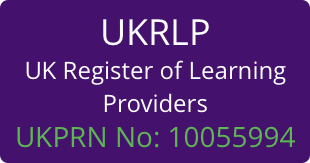
Adaptive learning is the future of e-learning. A bold statement to open with, but don’t be put off. From designed adaptivity to algorithmic adaptivity there is something for everyone. We have written in detail about online content strategies before, but today I wanted to look a bit more at the big picture.
Simply put, adaptive learning builds on the long-held understanding that different people learn in different ways. However, it is only recently become possible to use this knowledge to personally tailor an individual’s online learning experience. This is where e-learning becomes a super-tool helping learners learn more effectively [1] and increasing their satisfaction with their experience [2,3]. Both of these things are good for learners and good for e-learning developers as satisfied customers are more likely to come back for more.
As the popularity of e-learning continues to have high growth each year the demand for better educational technology is growing as well. This was brought into sharp focus during the pandemic, which we have covered in a previous blog. Adaptive learning has seemingly shown a lot of promise in meeting these growing needs of consumers. This is an alternative to the “one-size-fits-all” approach to teaching. Here, technology is used to tailor learning materials to an individual, maximizing the efficiency of teaching.
Learning materials can be adapted depending on a wide variety of factors. These could be self-defined things such as how learners prefer to visualise content. Assessed factors such as personality traits. Or how a learner responds to questions. This leads us back to the difference between designed and algorithmic adaptivity.

Designed Adaptive learning
Content can be made more engaging and tailored to a learner’s needs by using AI. For example, if someone is struggling with content then they might have to stay on the page longer and engage with more text or narration before they can move on. If a learner is good at certain parts of the content, they could skip over other parts using an adaptive learning interface. It can be used to provide needed remediation, share advanced content with excelling learners or encourage people racing through to slow down. This gives the educator more agency and control over what the learner experiences.
Educators design an educational plan to lead their learners toward content mastery. They help decide how the materials in the course will adapt to feedback and change over time. The changes are based on a variety of factors called adaptivity factors. The expert-model approach to adaptivity means that the AI can have different reactions according to the individual. It’s an “If THIS, then THAN THAT” approach.

Algorithmic adaptive learning
Algorithmic adaptivity is an approach in which one or more algorithms answer the following two questions. Firstly, what do learners already know about the subject? Secondly, what should the next lesson be on this subject? The algorithm can offer personalized feedback to students based on their responses and track the rate at which they learn. Common algorithms are Bayesian knowledge tracing, learning curves, and Monte Carlo methods. One of the most well-known frameworks is Item Response Theory (IRT), which is based on psychometrics.
Personality and e-learning
One of the really interesting ways in which adaptive learning can be developed is by using personality traits. Research has consistently shown that certain personality traits with satisfaction with online learning [4]. People with higher levels of conscientiousness and intellect/imagination were more likely to find online learning interesting. However, people who have high neuroticism, who are much less likely to enjoy online learning [5].
It is not only broad factors such as enjoyment that can be predicted by personality traits. For example, an introverted learner has a tendency to prefer depth-first learning strategies, preferring to explore an area in detail before moving on to new topics. While an extroverted learner prefers breadth-first learning strategies, preferring to move through the material quickly and then return to it later. An important secondary benefit of assessing a learner’s personality traits is it also helps them understand their own personality. This can help learners identify their strengths and weaknesses and make better choices in their studies.
Research has found that personality traits can be predicted just by how a learner interacts and performs when doing an online course [6]. Integrating this kind of technology into an adaptive learning course could enhance the user experience by removing the need to carry out a specific personality test at the beginning of an online course. In the future, we are likely to see more and more of these background tools used to tailor online learning. Similar to what we see with how our online experience is becoming more and more tailored to us as individuals.

The take-homes
If you are looking to develop e-learning in the near future and do not happen to be an AI whiz then maybe designed adaptivity is for you. If even that seems like a bit much then you could consider adding a personality test and the beginning of your courses and having different course structures dependent on the results. Although you may see this as time-consuming, research suggests learners will be more satisfied with your courses and happy learners mean they are more likely to buy your courses again.
You may also like:
Is Artificial Intelligence the Answer to Addressing Skills Gaps?
Is AI going to Accelerate L&D Changes for the Better?
Business Improvement in Challenging Times
References
[1] Lounsbury et al., 2003, “Intelligence, “Big Five” personality traits, and work drive as predictors of course grade,” Personality Individual Differences, vol. 35, no. 6, pp. 1231–1239
[2] Komarraju and Karau, 2005, “The relationship between the Big Five personality traits and academic motivation,” Personality Individual Differences, vol. 39, no. 3, pp. 557–567
[3] Pawlowskaet al 2014, “Student personality, classroom environment, and student outcomes: A person-environment fit analysis,” Learn. Individual Differences, vol. 36, pp. 180–193
[4] Downs 2019 An Exploration of the Relationship between Personality Type and Satisfaction with Online Learning Environments, 2019 Portland International Conference on Management of Engineering and Technology (PICMET), 1-4
[5] Kim et al 2017, “Personality and its effects on learning performance: Design guidelines for an adaptive e-learning system based on user model”, International Journal of Industrial Ergonomics, vol. 45, pp. 450-461
[6] Lai et al 2019 Automatic Personality Identification Using Students’ Online Learning Behavior, IEEE Transactions on Learning Technologies, 13, 1, 26-37







 UK: 0844 854 9218 | International: +44 (0)1488 580017
UK: 0844 854 9218 | International: +44 (0)1488 580017








